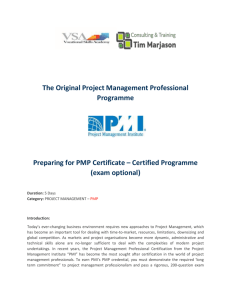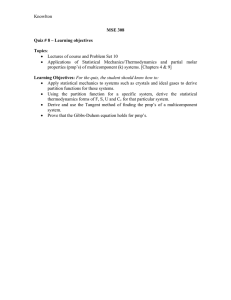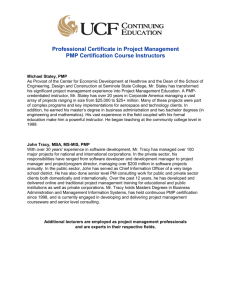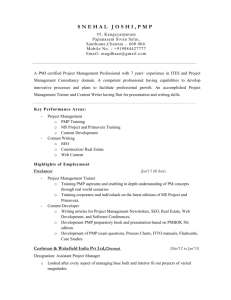Potential Uses of the Public Media Platform (PMP)
advertisement
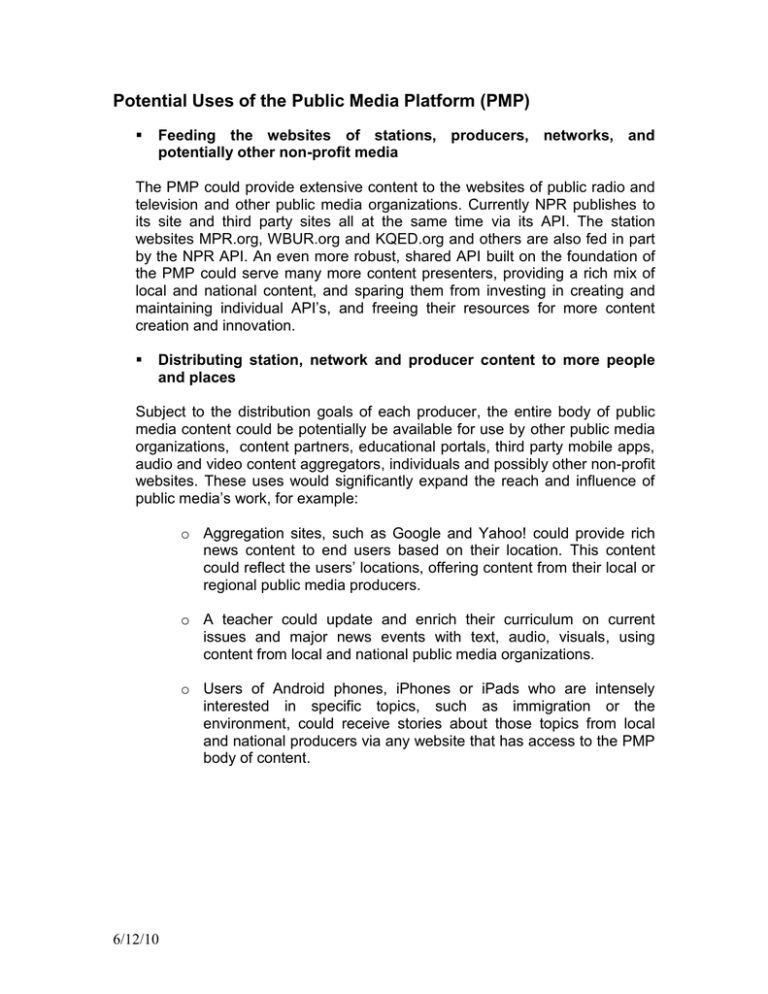
Potential Uses of the Public Media Platform (PMP) Feeding the websites of stations, producers, networks, and potentially other non-profit media The PMP could provide extensive content to the websites of public radio and television and other public media organizations. Currently NPR publishes to its site and third party sites all at the same time via its API. The station websites MPR.org, WBUR.org and KQED.org and others are also fed in part by the NPR API. An even more robust, shared API built on the foundation of the PMP could serve many more content presenters, providing a rich mix of local and national content, and sparing them from investing in creating and maintaining individual API’s, and freeing their resources for more content creation and innovation. Distributing station, network and producer content to more people and places Subject to the distribution goals of each producer, the entire body of public media content could be potentially be available for use by other public media organizations, content partners, educational portals, third party mobile apps, audio and video content aggregators, individuals and possibly other non-profit websites. These uses would significantly expand the reach and influence of public media’s work, for example: o Aggregation sites, such as Google and Yahoo! could provide rich news content to end users based on their location. This content could reflect the users’ locations, offering content from their local or regional public media producers. o A teacher could update and enrich their curriculum on current issues and major news events with text, audio, visuals, using content from local and national public media organizations. o Users of Android phones, iPhones or iPads who are intensely interested in specific topics, such as immigration or the environment, could receive stories about those topics from local and national producers via any website that has access to the PMP body of content. 6/12/10 Potential Uses of the PMP, cont. Giving context to major news events Major news events are best conveyed through a variety of lenses. For example, the Gulf oil spill is a national story covered by NPR and virtually every other media organization. Local public radio and TV stations could bring a perspective to that story unheard elsewhere; the national producers could provide national and international context, data and resources unavailable to local stations. The PMP could serve as a vehicle to pool audio, text, video and data about these major news events and their impact – serving as a resource for its presentation to users on any platform. . Informing the work of journalists and bloggers In addition to the rich content available from the PMP for distribution and presentation, it could employ tools to help content producers shape their work. A Wordpress plug in could be created that links directly to the PMP, allowing a journalist, blogger or web producer to automatically draw out content germane to their topic, informing and augmenting their own work.. In turn, their reporting or blog posts could flow back into the PMP for use by other content creators and presenters. Supporting partnerships With a comprehensive rights-management system, the PMP could make it possible for producers to establish and maintain content partnerships in ways that they can’t today. Stations, for example, could distribute their content to a specific partner such as a regional newspaper, while restricting it from others. This would allow the consumers of the content to have standardized ways of accessing it while allowing the content providers consistent ways to interact with partners. Other non-profit websites Subject to the business rules determine by the PMP and the rights preferences of producers, non-profit organizations could access the PMP to enrich their sites. For example, Wikipedia could illustrate their entries with content from PMP producers. 6/12/10 Potential Uses of the PMP, cont. A resource for a multiplicity of apps o Geo-targeted news app: an iPad or iPhone app could geo-detect the device’s location and deliver local or regional content to the user. o A jazz app for Android: jazz fan could create a jazz site and feed it with the PMP content from the many stations and producers that create and have rights to original jazz material. o Personal playlists: a user could create their own playlist suited to their tastes and topical interests drawing on content from local and national producers. o IP radio in cars: a driver with IP radio could create a stream of content to listen to, determined by location, topic or format. Once selected, the PMP could deliver a steady stream of stories or content that meets the driver’s criteria. 6/12/10

